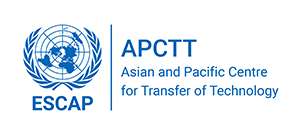Technique to Purify Water Contaminated by Natural Disasters
Water supplies are compromised when infrastructures break down due to hurricanes, floods, tsunamis, earthquakes, power blackouts, or terrorist attacks, all prevalent events around the world in the last several years. Reconstruction efforts require rapid re-establishment of the water supply. Boiling water is impractical if electric and gas utilities have been disrupted, and disinfection of contaminated wells involves complicated procedures with no guaranteed effectiveness. Researchers at USA have developed a technique in which a polymer sheet of resins containing copper is immersed in the contaminated flood water. The addition of hydrogen peroxide generates free radicals on the polymer. The free radicals remain bound to the sheet, where they come in contact with bacteria and kill them. Free radicals are atoms or molecules that have an extra electron in dire need of a partner (they obtain the partner by stripping it from a nearby atom, damaging the "victim" in the process). In large quantities, the radicals can destroy toxic chemicals and even bombard bacteria to death or irreparably damage a microorganism's cell membrane. Applying their technique to water from the Industrial and 17th Street canals in New Orleans, the researchers were able to destroy all of the bacteria within 15 minutes. In tests with laboratory water samples containing even higher bacterial concentrations, the exact same process killed at least 99 percent of the bacteria in 90 minutes. While the method cleans the water, it doesn't yet make the water drinkable. For more information, contact: Dr. Vishal Shah Assistant Professor of Biology Office: KSC 112 Department of Biology Dowling College Oakdale, NY USA Phone: 631 244-3339 Fax: 631 244-1033
Sector: Disaster Management and Mitigation
Country: India
Area of Application: Disaster Management, Water Sanitation
Keywords: Free radicals, Fenton reaction
Advantages: 1. The system is safer, cheaper and simpler to use than many other methods--breaks down a range of toxic chemicals. 2. The method may eventually prove critical for limiting the spread of disease at disaster sites around the world.
Environmental aspects: Not Applicable
Development Status: Pilot Plant
Legal Protection:
Technical specifications:
Transfer Terms: Consultancy
Target Countries:
Estimated cost (US$):
Upload any relevant document:
Contact Person: APCTT (UNESCAP)
Address: Asian and Pacific Center for Transfer of Technology (APCTT) C-2, Qutab Instituational Area
City: New Delhi
Country: India
Zip/Pin Code: 110016

